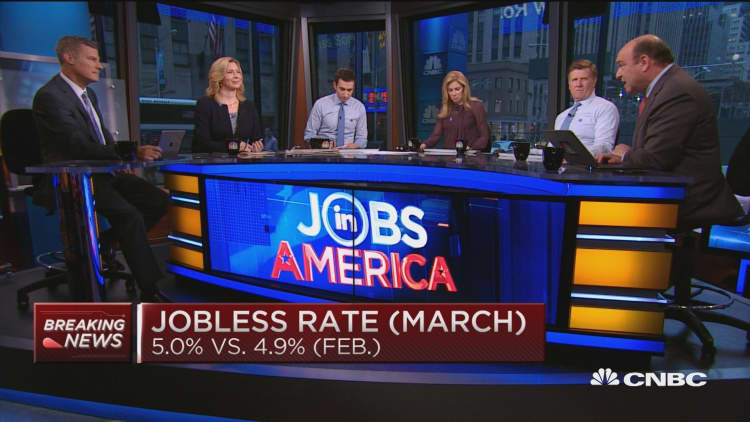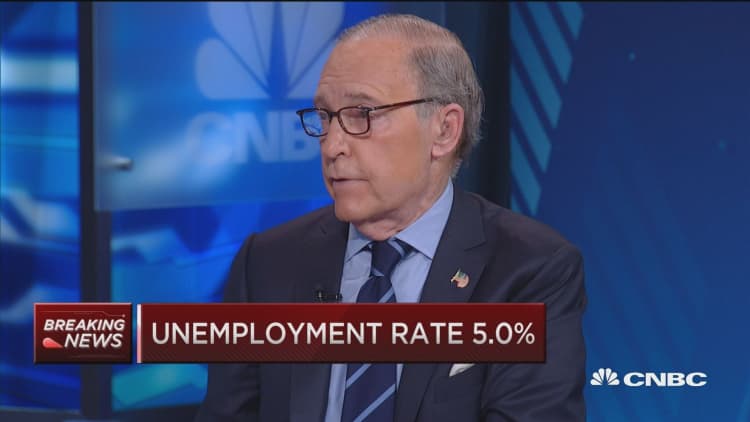


Nonfarm payrolls increased by 215,000 in March, providing a positive sign for an economy that otherwise has been slowing lately.
The jobs growth came as the headline unemployment rate rose to 5.0 percent, the first month-over-month increase since May 2015. The level of unemployed Americans considered part of the workforce rose to 7.97 million, from 7.82 million in February. A separate measure of unemployment that includes those not looking for work as well as those working part-time for economic reasons also rose one-tenth to 9.8 percent.
Economists surveyed by Reuters were expecting nonfarm payrolls to show growth of 205,000 for March, down from the initially reported 242,000, and the unemployment rate to hold steady at 4.9 percent.
"It's a very solid report. I'm just not sure it's going to mean all that much to the market today," said Michael Arone, chief investment strategist at State Street Global Advisors. Arone added the doubts the report will have much consequence with Fed policymakers who have made clear in recent days that a rate hike anytime over the next few months is unlikely.
"The report itself was very good," he said.
Stock market futures, however, did not act positively, adding to modest losses ahead of the opening bell.
The closely watched wages portion of the report showed strength, with average hourly earnings climbing 7 percent, representing a 2.3 percent annualized again. Retail led the way with 48,000 new jobs, while construction and health care added 37,000 each. Food and drinking establishments contributed 25,000, while financial activities added 15,000.
Another important metric, the labor force participation rate, rose as well, hitting 63 percent and marking the highest level since March 2014. The measure had been mired around its lowest level since the late-1970s.
On the downside, manufacturing lost 29,000 and mining declined 12,000 as the sector has lost 185,000 jobs since September 2014.
"As the saying goes, slow and steady wins the race and that has been the story of jobs creation for many months now in the U.S.," said Mark Hamrick, Bankrate.com's senior economic analyst. "On the positive side, the long economic recovery, dating back to the summer of 2009, still appears to be sustainable."
Wall Street looked to the Labor Department's report for clues as to the health of an economy that is close to stall speed. The Atlanta Fed sees gross domestic product increasing just 0.6 percent for the first quarter, a decline from the anemic 1.4 percent growth to close out 2015.
Fed officials watch the jobs report closely as they look to normalize monetary policy. The U.S. central bank hiked its interest rate target a quarter point in December, a move that led to intense financial market volatility.
Fed officials of late — particularly Chair Janet Yellen — have been making mostly dovish comments about future rate expectations. A sharp decline in exports and residential investment are fueling the downbeat forecasts.
The report did give some fuel to the futures markets, with traders now pushing the chance of a June rate hike up to 30 percent, from 24 percent Thursday. The September meeting now carries a 53 percent chance of a rate hike, up from 41 percent.
Previous months' reports saw only minor revisions, with January nudged down from 172,000 to 168,000 and February pushed up from 242,000 to 245,000.



